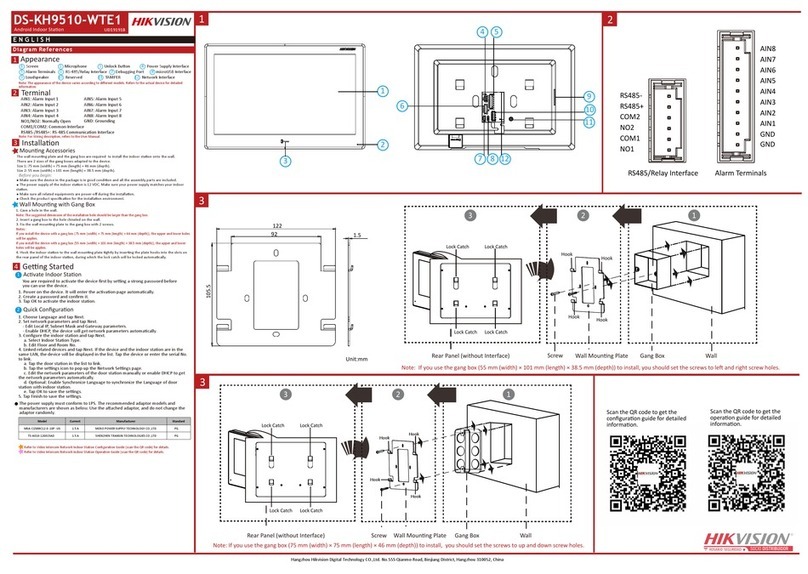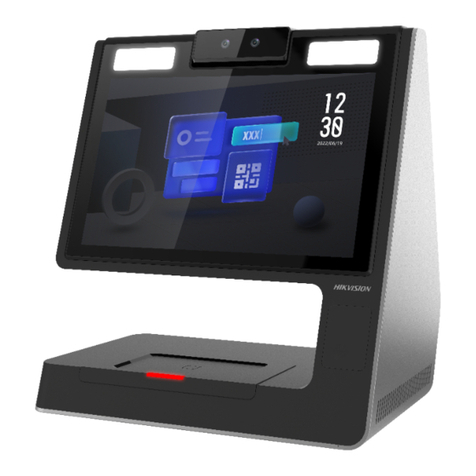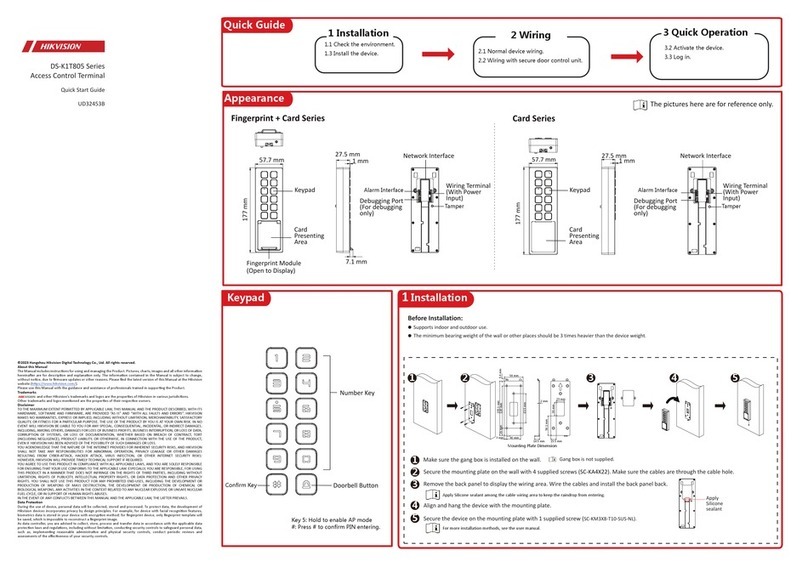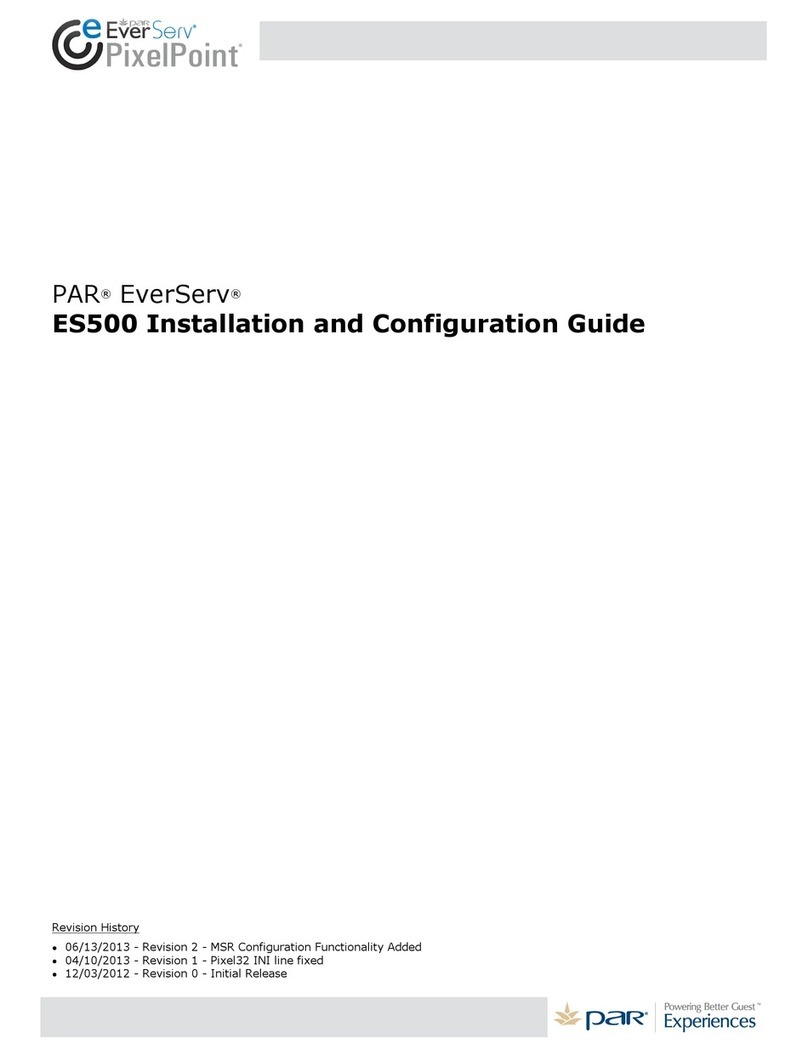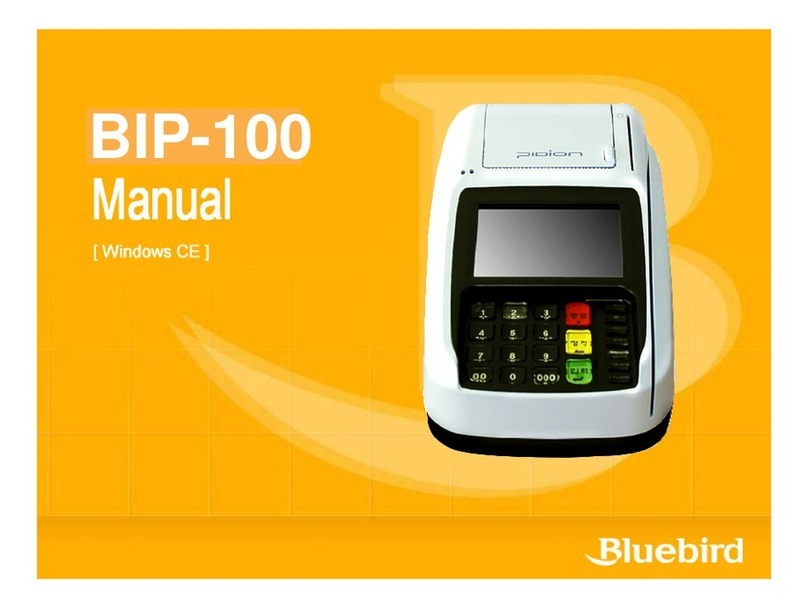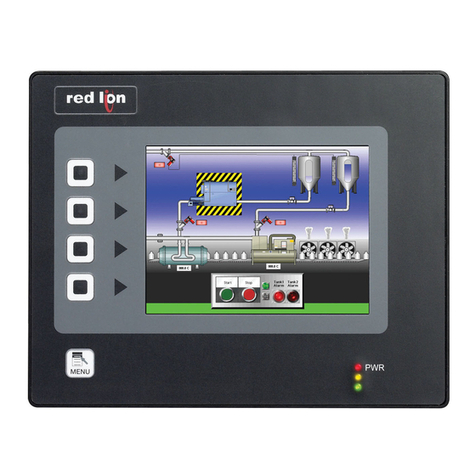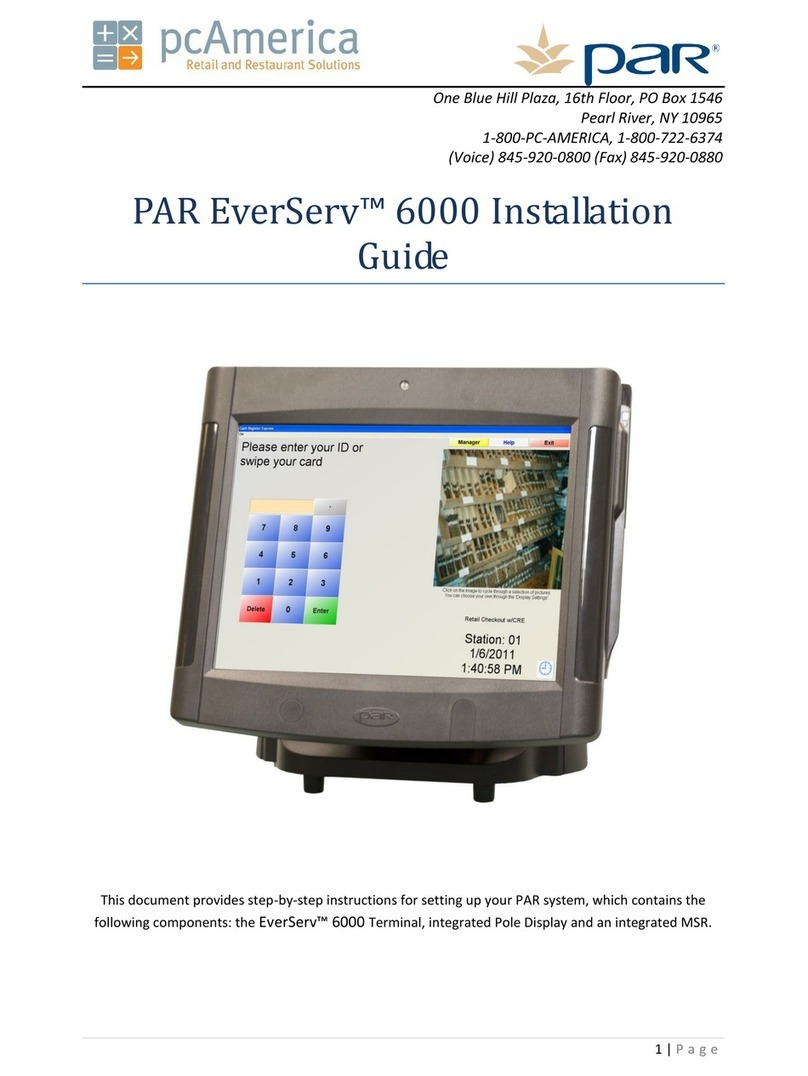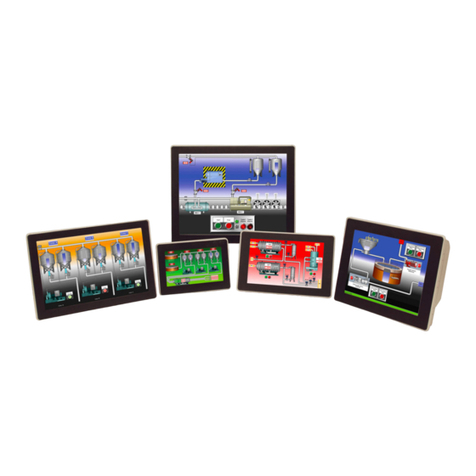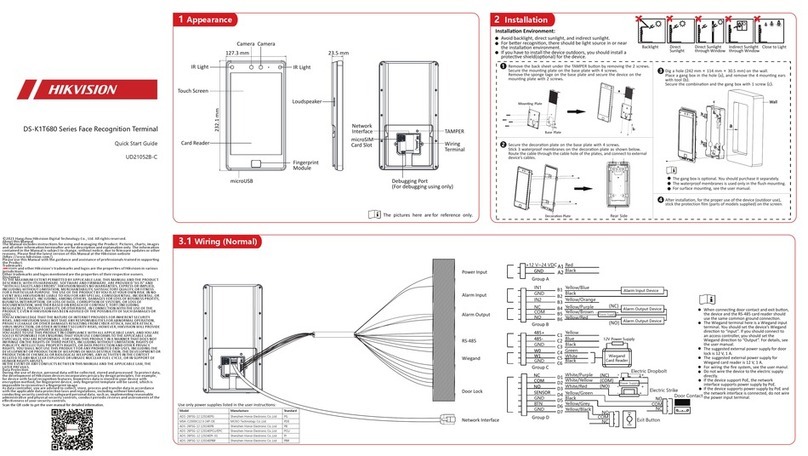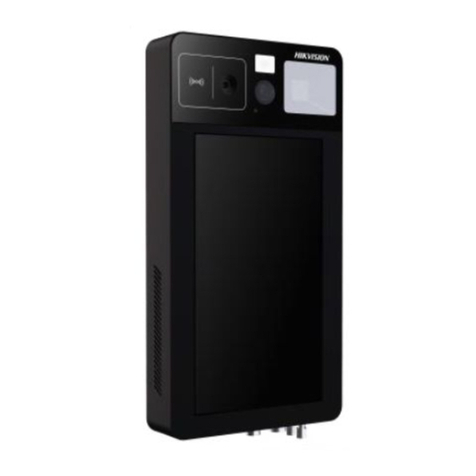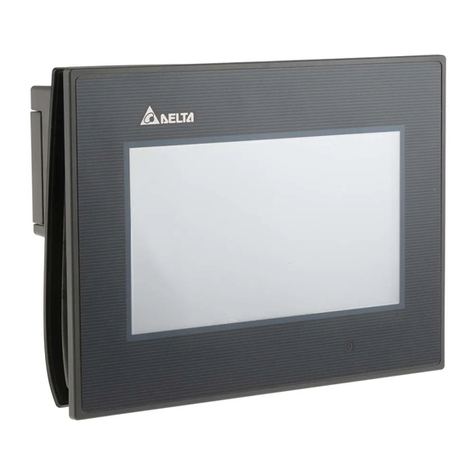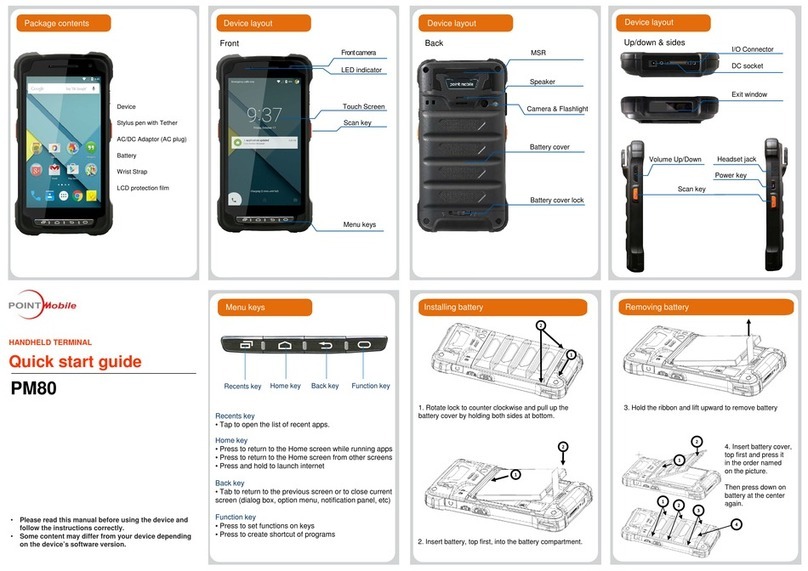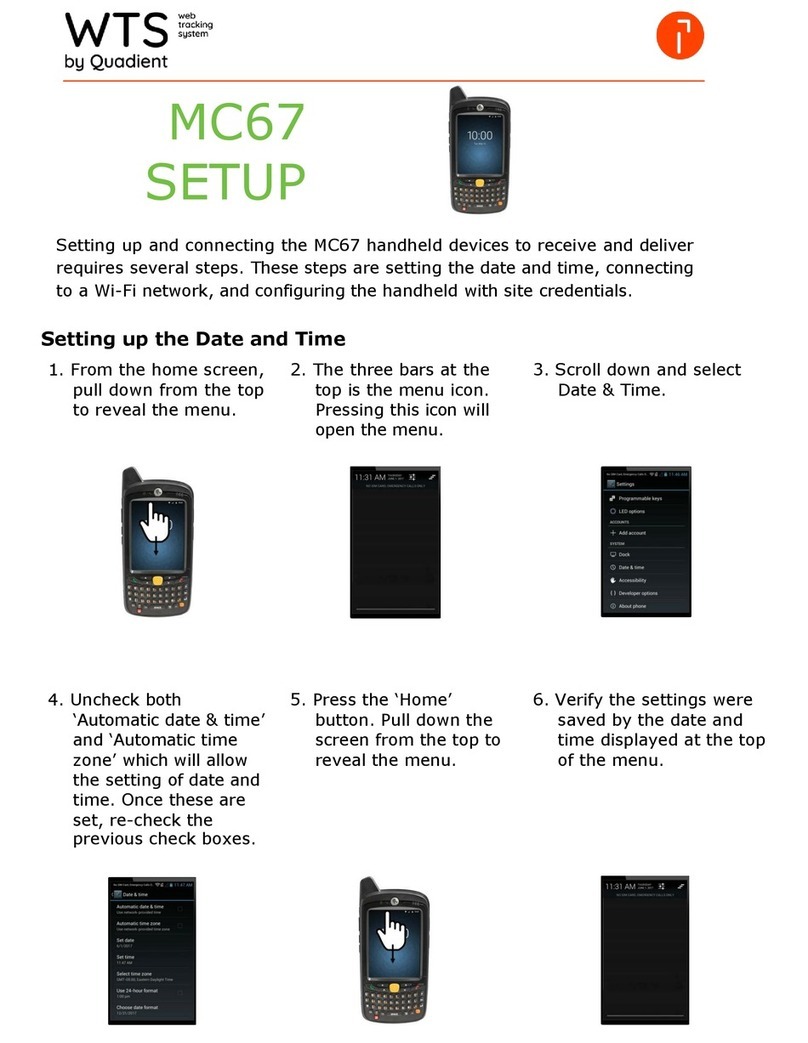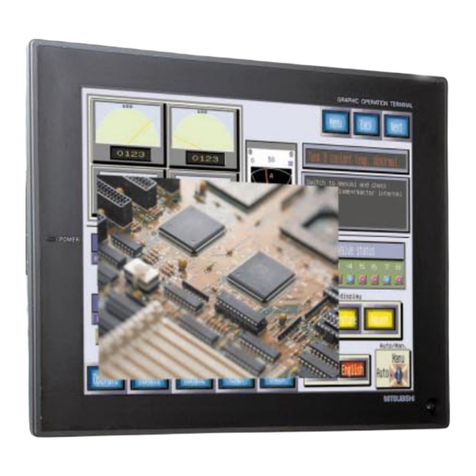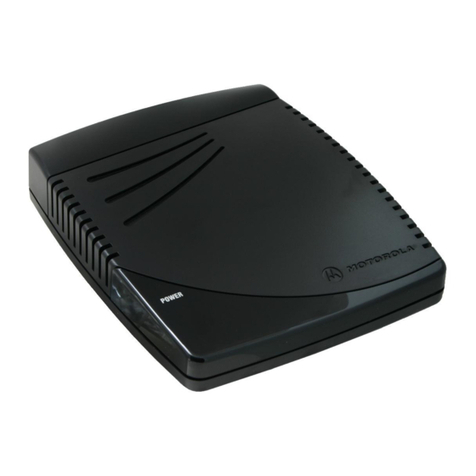SEW-Eurodrive DOP11B Quick start guide

Drive Technology \ Drive Automation \ System Integration \ Services
DOP11B Operator Terminals
Safety Notes and
Short Summary
Edition 11/2008
16642813 / EN

SEW-EURODRIVE – Driving the world

Safety Notes and Short Summary – DOP11B Operator Terminal 3
Contents
1 General Information .......................................................................................... 4
1.1 Scope of this documentation..................................................................... 4
1.2 Structure of the safety notes ..................................................................... 4
2 Safety Notes ...................................................................................................... 5
2.1 General information .................................................................................. 5
2.2 Designated use ......................................................................................... 5
2.3 Installation and startup.............................................................................. 6
2.4 Safety functions ........................................................................................ 6
2.5 Transportation/storage.............................................................................. 7
2.6 Operating notes ........................................................................................ 7
2.7 Service and maintenance ......................................................................... 7
3 Installation ......................................................................................................... 8
3.1 Installation instructions for the basic unit .................................................. 8
3.2 UL-compliant installation........................................................................... 9
3.3 Space required for installation................................................................. 10
3.4 Installation process ................................................................................. 11
3.5 Connecting basic units DOP11B-10 to DOP11B-60 ............................... 13
4 Startup.............................................................................................................. 14
4.1 Preliminary work and resources.............................................................. 14
4.2 Initial operation........................................................................................ 15
4.3 Terminal functions................................................................................... 16
5 Operation and Service .................................................................................... 22
5.1 Operating display at unit start ................................................................. 22
5.2 Error messages....................................................................................... 23
5.3 SEW Electronics Service ........................................................................ 25
6 Technical Data................................................................................................. 26
6.1 Pin assignment ....................................................................................... 26
6.2 Cables..................................................................................................... 28

4Safety Notes and Short Summary – DOP11B Operator Terminals
1 Scope of this documentation
General Information
System manual
1 General Information
1.1 Scope of this documentation
This documentation sets out the general safety notes and selected additional informa-
tion on DOP11B operator terminals.
• Please note that this documentation does not replace the detailed system manual.
• You must read the detailed system manual before working with DOP11B operator
terminals.
• Note and follow the information, instructions and notes in the detailed system
manual. This is essential for fault-free operation of the unit and fulfillment of any
rights to claim under guarantee.
• The detailed system manual is provided in PDF format on the enclosed CD or DVD.
• All SEW-EURODRIVEs’ technical documentation is available to download in PDF
format from the SEW-EURODRIVE website: www.sew-eurodrive.de.
1.2 Structure of the safety notes
The safety notes in this documentation are designed as follows:
Pictogram SIGNAL WORD!
Type and source of danger.
Possible consequence(s) if the safety notes are disregarded.
• Measure(s) to prevent the danger.
Pictogram Signal word Meaning Consequences if
disregarded
Example:
General danger
Specific danger,
e.g. electric shock
DANGER! Imminent danger Severe or fatal injuries
WARNING! Possible dangerous situation Severe or fatal injuries
CAUTION! Possible dangerous situation Minor injuries
STOP! Possible damage to property Damage to the drive system or its
environment
NOTE Useful information or tip.
Simplifies the handling of the
drive system.

Safety Notes and Short Summary – DOP11B Operator Terminals 5
2
General information
Safety Notes
2 Safety Notes
2.1 General information
• Read the safety notes carefully.
• Check the delivery for transport damage. If there is any damage, advise your
supplier.
• The terminal fulfills the requirements of article 4 of EMC directive 89/336/EEC.
• Do not use the terminal in an environment that represents a high explosive hazard.
• SEW-EURODRIVE is not liable for modifications, changes, additions and/or
alterations to the product.
• Use only spare parts and accessories manufactured according to SEW-
EURODRIVE specifications.
• Read the installation and operating instructions completely and carefully prior to
installation, use or repair of the terminal.
• Never allow fluids to penetrate the slots or holes in the terminal. This may lead to a
fire or cause the equipment to become live.
• Operation of the terminal is restricted to qualified personnel.
2.2 Designated use
The operator terminals of the DOP11B series are units for the operation and diagnosis
of industrial and commercial systems.
The controller must react appropriately to communication errors between it and the
DOP11B. Appropriate measures (e.g. limit switch, position monitoring) should be taken
to ensure that an error in communication to the DOP11B cannot cause any kind of
damage.
Do not start up the unit (take it into operation in the designated fashion) until you have
established that the machine complies with the EMC Directive 2004/108/EC and that the
conformity of the end product has been determined in accordance with the Machinery
Directive 98/37/EC (with reference to EN 60204).

6Safety Notes and Short Summary – DOP11B Operator Terminals
2 Installation and startup
Safety Notes
2.3 Installation and startup
• The terminal has been designed for stationary installation.
• Place the terminal on a stable base during installation. The terminal may be
damaged if it is dropped.
• Install the terminal according to the accompanying installation instructions.
• The unit must be grounded according to the accompanying installation instructions.
• Installation must be performed by qualified personnel.
• Route high-voltage cables, signal cables and supply cables separately from one
another.
• Make sure that the voltage and polarity of the electrical power source are correct
before you connect the terminal to the power supply.
• The openings in the housing are designed to allow air to circulate and must not be
covered.
• Do not install the terminal in locations where it will be exposed to a powerful magnetic
field.
•Do not install or operate the terminal where it will be exposed to direct sunlight.
• The peripheral equipment must be suitable for the application.
• On certain terminal models, the display glass is covered with a laminated foil to
protect it from scratches. Pull off the foil carefully following installation to prevent
static electricity causing damage to the terminal.
Preventive measures and protection devices must correspond to the regulations in
force (e.g. EN 60204 or EN 50178).
Required preventive measures: Ground the unit
Required protection devices: Overcurrent protective devices
2.4 Safety functions
WARNING!
The operator terminals of the DOP11B series may not execute any safety functions
without higher-level safety systems.
Severe or fatal injuries.
• Use higher-level safety systems to ensure protection of equipment and personnel.

Safety Notes and Short Summary – DOP11B Operator Terminals 7
2
Transportation/storage
Safety Notes
2.5 Transportation/storage
Inspect the shipment for any damage that may have occurred in transit as soon as you
receive the delivery. Inform the shipping company immediately. Do not operate the
operator terminal if it is damaged.
Use suitable, sufficiently rated handling equipment if necessary.
Store the operator terminal in a dry, dust-free room if it is not to be installed straight
away.
2.6 Operating notes
• Always keep the terminal clean.
•Emergency stop and other safety functions should not be controlled from the
operator terminal.
• Do not touch the keys, displays, etc. with sharp objects.
• Bear in mind that the terminal is ready to operate even if the backlighting no longer
functions. This means keyboard and touchscreen inputs will still be registered.
2.7 Service and maintenance
• The agreed limited warranty applies.
• Clean the display and face of the terminal with a soft cloth and mild detergent.
• Repairs must be performed by qualified personnel.

8Safety Notes and Short Summary – DOP11B Operator Terminals
3 Installation instructions for the basic unit
Installation
3 Installation
3.1 Installation instructions for the basic unit
3.1.1 Separate cable ducts
Route power cables and electronics cables in separate cable ducts.
3.1.2 Cross sections
• Voltage supply: Cross section according to rated input current.
• Electronics cables:
– 1 conductor per terminal 0.20 ... 0.75 mm2(AWG 20 ... 17)
– 2 conductors per terminal 0.20 ... 0.75 mm2(AWG 20 ... 17)
3.1.3 Shielding and grounding
• Use shielded signal cables only.
• Apply the shield by the shortest possible route and make sure it is grounded
over a wide area at both ends. You can ground one end of the shield via a suppres-
sion capacitor (220 nF / 50 V) to avoid ground loops. If using double-shielded cables,
ground the outer shield on the controller end and the inner shield on the other end.
•Shielding can also be achieved by laying the cables in grounded sheet metal
ducts or metal pipes. In this case, the power cables and control cables should
be routed separately.
• The unit is grounded via the connector for 24 V voltage supply.
00755BXX
Figure 1: Example of correct shield connection with metal clamp (shield clamp) or metal
cable gland

Safety Notes and Short Summary – DOP11B Operator Terminals 9
3
UL-compliant installation
Installation
3.2 UL-compliant installation
Note the following points for UL-compliant installation:
• This unit is only suitable for use in class I, division 2, group A, B, C and D or in areas
not at risk. Combinations of units in your installation must be inspected by the
responsible official inspection authority at the time of installation.
• Use only copper conductors with a temperature range of 60/75 °C as connection
cables.
• The maximum ambient temperature is 40 °C for horizontal mounting and 50 °C for
units mounted vertically.
WARNING – EXPLOSION HAZARD!
• Only disconnect units if they are not live or there is no hazard in the relevant area.
• Replacing components may result in the unit no longer being suitable for class I,
division 2.
• Only the following extension devices may be connected to the connection marked
"Extension":
– PFE11B, for DOP11B-10 and DOP11B-20 only.
• Only replace the extension unit if it is not live or there is no hazard in the relevant
area.
• This unit contains a battery that may only be replaced in a safe area. The replace-
ment battery type must be as follows: CR2450 lithium battery, 550 mAh.
• For use on a level surface with enclosure 4X. For indoor use only.
NOTE
Electrical connection according to the methods described in class I, paragraph 2
(article 501-4(b) according to National Electric Code NFPA70).
STOP!
Only use tested units with a limited output voltage (Vmax = DC 30 V) and limited
output current (I ≤8 A) as an external DC 24 V voltage source.
UL certification does not apply to operation in voltage supply systems with a non-
earthed star point (IT systems).

10 Safety Notes and Short Summary – DOP11B Operator Terminals
3 Space required for installation
Installation
3.3 Space required for installation
• Thickness of mounting platform: 1.5 - 7.5 mm (0.06 - 0.3 inches)
• Space required for installing the operator terminal:
The openings in the housing are used for convection cooling. These opening must not
be sealed.
63788AXX
100 mm100 mm
100 mm
50 mm50 mm

Safety Notes and Short Summary – DOP11B Operator Terminals 11
3
Installation process
Installation
3.4 Installation process
1. Unpack and check the delivery. If there is any damage, advise the supplier.
2. Place the template at the location where the operator terminal is to be installed, mark
the outer edge of the opening and cut the markings as appropriate.
3. Use all the retaining bores and the brackets and screws supplied to fix the operator
terminal in place:
STOP!
Place the operator terminal on a stable base during installation. The unit may be
damaged if it falls.
63789AXX
63827AXX 63825AXX
0.5 - 1.0 Nm

12 Safety Notes and Short Summary – DOP11B Operator Terminals
3 Installation process
Installation
4. Connect the cables in the order indicated.
5. Take care when removing the laminated foil from the operator terminal’s display to
avoid any damage resulting from static electricity.
63822AXX
[1] Make sure the operator terminal and the controller system have the same electrical grounding
(reference voltage level) as otherwise there could be communication problems.
[2] Use an M5 screw and a PE conductor (as short as possible) with a minimum cross section of
2.5 mm2.
[3] Only use shielded communication cables.
Route high-voltage cables separately from signal and supply cables.
[4] The operator terminal must adjust to the ambient temperature before it is taken into operation. If
condensation builds up, you must ensure that the operator terminal is dry before connecting it to the
power supply.
Ensure that the voltage and polarity of the power source are correct.
[5] Control cabinet
RS-422 / RS-485
RS-232
DC 24 V
DC 24 V
Ethernet
[5]
[2][1] [4][3]

Safety Notes and Short Summary – DOP11B Operator Terminals 13
3
Connecting basic units DOP11B-10 to DOP11B-60
Installation
3.5 Connecting basic units DOP11B-10 to DOP11B-60
3.5.1 Voltage supply
STOP!
Ensure correct polarity when connecting the terminal. Incorrect polarity will damage the
unit.
NOTE
Make sure that the operator terminal and the controller system have the same electrical
grounding (reference voltage value). Otherwise, there could be communication errors.
60059AXX
Figure 2: Voltage supply for DOP11B-10 to DOP11B-60
[1] Ground
[2] 0 V
[3] +24 V
[1] [2] [3]

14 Safety Notes and Short Summary – DOP11B Operator Terminals
4 Preliminary work and resources
Startup
4Startup
4.1 Preliminary work and resources
• Check the installation
• Take suitable measures to prevent the motor from starting up unintentionally via the
connected frequency inverter.
– Remove the electronics input X13.0/controller inhibit in MOVIDRIVE®or
– Disconnect the supply voltage (24 V backup voltage must still be applied)
– Remove terminals "CW operation" and "Enable" in MOVITRAC®
Furthermore, additional safety precautions must be taken depending on the applica-
tion to avoid injury to people and damage to machinery.
• Connect the operating terminal to MOVIDRIVE®or MOVITRAC®using an appropri-
ate cable.
• Connect the operator terminal to the PC using the PCS11B (RS-232) programming
cable. Operator terminal and PC must be de-energized when you do this, otherwise
undefined states may occur. Switch on the PC. If the HMI-Builder project planning
software is not already installed on the PC, install it now and then start the software.
60093AXX
Figure 3: Connection between operator terminal and MOVIDRIVE®MDX60B/61B
60060AXX
Figure 4: Connection between PC and operator terminal
RS-485
DOP11B-30
PCS11B
RS-232 RS-232
DOP11B
00
I

Safety Notes and Short Summary – DOP11B Operator Terminals 15
4
Initial operation
Startup
• Activate the supply (24 V) for the operator terminal and connected frequency
inverters.
4.2 Initial operation
Units are delivered without a loaded project.
After initial power on, the units will report the following information:
NOTE
Alternatively, the DOP11B can also be programmed via ETHERNET and via USB.
11597AXX
Figure 5: DOP11B-20 initial screen in delivery state
12076AXX
Figure 6: DOP11B-50 initial screen in delivery state
00
I

16 Safety Notes and Short Summary – DOP11B Operator Terminals
4 Terminal functions
Startup
4.3 Terminal functions
This chapter describes the different modes in the operator terminal, the keyboard and
the information page in the terminal.
4.3.1 Terminal keypad
60097AXX
[1] Integrated function keys
[2] Arrow keys
[3] Alphanumeric keys
[1]
[2]
[3]
00
I

Safety Notes and Short Summary – DOP11B Operator Terminals 17
4
Terminal functions
Startup
Alphanumeric
keys
The following characters can be entered in dynamic text and numerical objects during
the run mode in the terminal using the alphanumeric keyboard.
0-9
A-Z
a-z
! ? < > ( ) + / * = º % # : ’ @
National characters
Numeric values are entered by pressing the respective key once.
Enter capital letters (A to Z) by pressing the respective key two to five times.
Enter lower case letters (a to z) by pressing the respective key six to nine times.
The delay time interval between pressing can be set. If the key is not pressed within the
specified time interval the cursor moves to the next position.
Enter national characters by pressing key <2> (C1C4) two to nine times. This option
offers characters that are not included in the standard character set of the alphanumeric
terminal keyboard.
You can use all characters of the selected character set in the HMI-Builder except those
characters reserved for static text. To enter the required character, press the
<ALT>+<0> (zero) key combination on the PC’s keyboard; then enter the character
code. You select the used character set in the HMI-Builder.
Reserved
characters
The ASCII characters 0-32 (Hex 0-1F) and 127 are reserved for internal terminal
functions and must not be used in projects or files in the terminal. These characters are
used as control characters.
Arrow keys Use the arrow keys to move the cursor in a menu or dialog box.
Integrated function
keys
Not all the keys are available on all terminals.
Key Description
Enter key Use the ENTER key to confirm the setting made and to go to the next line or level.
<PREV> Use this key to return to the previous block.
<NEXT> Use this key to go to the next block.
<ALARM> Use this key to display the alarm list.
<ACK> Use this key to acknowledge alarms in the alarm list.
<HOME> Use this key to jump to block 0 in run mode.
<←> Use this key to delete characters to the left of the cursor.
NOTE
If the main block (block number 0) has been displayed, the <PREV> key will not work,
since the block history is deleted when the main block is shown.
00
I

18 Safety Notes and Short Summary – DOP11B Operator Terminals
4 Terminal functions
Startup
4.3.2 Switches on DOP11B terminals
DOP11B operator terminals have 4 mode selection switches (DIP switches) on the
back.
DIP switch assignment is as follows:
1 = ON, 0 = OFF
Interrupt the power supply to the terminal to call up individual modes for DOP11B.
Then turn the DIP switch on the side or back of the terminal to the position shown in the
following table. You can now turn on the power supply again.
60855AXX
Switch position
1234
Function
0000 Run mode (RUN, standard operation)
0010 Reset system (delivery state)
0100 Sysload
1000 Configuration mode (SETUP)
1100 No function (RUN)
1110 Activates self-test function
XXX1 Hard reset
1
24V DC
CF CARD
COM 1
RS422
RS485
COM 2
RS232
10/100
EXPANSION
BUSY
MODE
1 2 3 4
ON DIP
1 2 3 4
ON DIP
1 2 3 4
ON DIP
00
I

Safety Notes and Short Summary – DOP11B Operator Terminals 19
4
Terminal functions
Startup
4.3.3 Service menu
The service menu is called up by setting the mode switch on the operator terminal to
"1000". For details on mode switches, refer to the section "Switches on DOP11B
terminals" on page 18.
The service menu includes the following options:
Network settings Select this option to call up the network menu.
Network menu The options in the network menu correspond to the selection of [Settings] / [Network] in
the HMI-Builder. It includes the following entries:
Erase project
memory
This option erases the project memory.
Load project from
memory card
An empty operator terminal can be started using an existing information designer project
from another terminal. The project must first be loaded onto a Compact Flash memory
card or a USB memory stick using the function "Save project on memory card" (e.g.
using a function key).
Insert the memory card in the empty operator terminal before starting the uploading
process. Then choose the command "Load project from memory card" from the service
menu and follow the instructions.
Enter transfer
mode
Enables the transfer mode required to download projects by GSM modem to be called
up manually.
Enter run mode Enables the mode to be called up manually.
Update system
program from
memory card
Connect a Compact Flash memory card or a USB memory stick with a new system
program and follow the instructions. The system program can also be updated using
configuration software for the operator terminals.
Calibrate touch
screen
Follow the on-screen instructions to calibrate the touchscreen.
Menu entry Described in
TCP/IP settings Network communication via ETHERNET
Accounts Network accounts
Services Network services
00
I

20 Safety Notes and Short Summary – DOP11B Operator Terminals
4 Terminal functions
Startup
4.3.4 Operating modes RUN and SETUP
The operator terminal has two operating modes.
•Configuration mode (SETUP): All basic settings are made in this mode, such as
selection of controller system and menu language.
•Run mode (RUN): This mode is for running the application.
Configuration
mode (SETUP)
This section contains a description of functions that cannot be carried out with the HMI-
Builder.
Erasing the memory
The [setup] menu in the terminal includes the function [Erase Memory]. Use this function
to erase the application memory of the terminal. All blocks and definitions for alarms,
time channels, function keys and system signals are erased.
Run mode (RUN) The application is executed in run mode. Block 0 will automatically be displayed on the
screen when changing to run mode.
The integrated keyboard is used to highlight and change values in run mode.
If a communication error occurs between the terminal and the controller system, an error
message will be shown on the screen. The terminal starts automatically once
communication is reestablished. If you press an I/O key combination while a communi-
cation error is active, the combination will be stored in the terminal buffer and transferred
to the controller system once communication resumes.
The terminal clock can continuously send data to a register in the controller to activate
a monitoring function. The controller can use this monitoring function to detect a
communication error. The controller checks if the register has been updated. If not, an
alarm indicating a communication error is activated in the controller.
The functional principle of individual objects and functions in operating mode will be
explained in connection with the description of the respective objects and functions.
Parameter Description
Enter key The memory is erased. The configuration menu is shown automati-
cally when the erasure is completed.
<PREV> Return to previous level without erasing the memory.
NOTE
When the memory is erased all data stored in the terminal will be lost. The language
selection parameter is not affected by this function. All other parameters will be erased
or reset to their default values.
00
I
Other manuals for DOP11B
1
Table of contents
